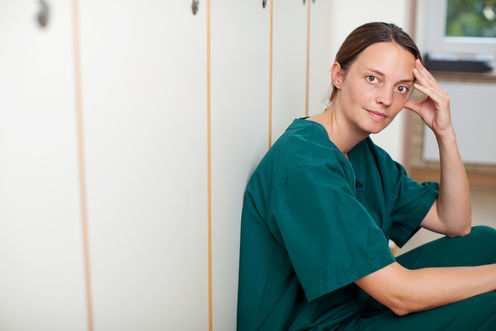
You would expect women to flourish in medicine. Since 1996, women have outnumbered men in Australian medical schools. More than half of general practice trainees, two out of three paediatric trainees, and close to three in four obstetricians in training are women.
Look at surgical training and this pattern stops: fewer than one in three surgical trainees are women, and the numbers fall further as doctors reach advanced training. Just 9% of surgeons in Australia are women.
Late last week, vascular surgeon Dr Gabrielle McMullin unleashed a storm by suggesting that sexual harassment was common in surgical training. She said gaining redress was so compromised that if a female doctor was propositioned, providing a sexual favour may be the only way to sustain her career.
Data from medical schools in the United States, the United Kingdom and Australia all confirm that sexual harassment occurs in medical school. A 2005 US study of medical students found 92.8% of female students had experienced, observed or heard about at least one incident of gender discrimination and sexual harassment during medical school. This harassment continues into specialist training.
Systemic bullying and harassment ranges from crass sexualised jokes, inappropriate touching and crass commentary on female doctors’ bodies, to frank requests for sexual favours. Some of these may occur in public, but much is unwitnessed.
Women doctors report that they may be able to manage harassment by patients and by their peers, but harassment from supervisors is much more difficult to deal with. Many women doctors are reluctant to come forward and develop feelings of guilt and resignation.
Sexual harassment occurs within a larger culture of discrimination against women in post-graduate medical training. A recent US study of female surgeons found 87% experienced gender-based discrimination in medical school, 88% in residency and 91% in practice.
Anecdotal reports suggest some women trainees are asked at interview about their intentions to have children, or advised that only certain careers are suitable for women with children. When employed, some female trainees report being given job contracts that are structured so they can never meet the criteria for maternity leave. Others say their rosters make it impossible to carry on with a career while maintaining caring responsibilities.
The toxicity of surgical training arises because it’s highly hierarchical, male-dominated, and – like most hospital-based training in the specialties – involves an intense apprenticeship training mode. Career advancement depends on personal recommendation from supervisors, and careers can be stymied by withholding this.
Junior doctors face increasing pressure for specialist training places. Although positions for many specialties are gradually increasing, this is out of kilter with the large increase in medical graduates, following the establishment of new medical schools over the last ten years.
In a high-pressure surgical environment, where older male consultants dominate, and there is great competition for training positions and jobs, women can often find themselves in very poor bargaining positions, vulnerable to sexual harassment.
Although female surgeons may face the worst of sexual harassment, this culture is endemic to medicine more generally and is so common that many doctors do not even notice it. A recurrent theme expressed by victims is the difficulty being believed, and once believed, not seeing any consequences for the perpetrator.
Sexual harassment is fundamentally about power. Saying sexual harassment is about “sex” is like hitting someone over the head with a shovel and calling it gardening. Identifying sexual harassment as it occurs can prove challenging for the doctors and medical students involved, especially if senior peers, including women, laugh it off or engage in collaborative bullying.
Nor is it limited to women. Bullying on the basis of sexual preference, race and age have all been reported in the medical workplace.
To solve the problem, we first need acknowledgement that career repression via sexual harassment, bullying and humiliation occurs, and that victims are not supported when they report.
We also must recognise that full-time apprenticeship mode of training, particularly when there are limited training positions, places junior doctors in a structurally vulnerable position.
We need more and broader modes of training. Part-time training remains unusual in most training programs except general practice. There are currently six part-time surgical trainees, accounting for 0.5% of all training positions in surgery, despite evidence that these trainees are as successful as full-time trainees.
The Royal Australasian College of Surgeons’ announcement yesterday that it will establish an expert advisory committee into bullying and harassment is very welcome. Other specialist colleges should also review harassment in their own programs.
Written policies on harassment in the workplace have existed for many years in health workplaces, but they have not changed the culture. It is time for a concerted approach from both colleges and hospitals to recognise and embrace the kinds of changes that will make medical training inclusive and safe for all medical graduates.
The authors do not work for, consult to, own shares in or receive funding from any company or organisation that would benefit from this article. They also have no relevant affiliations.
